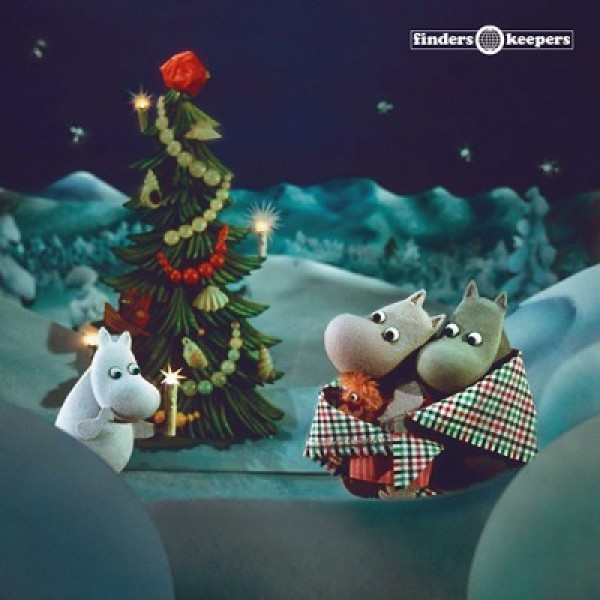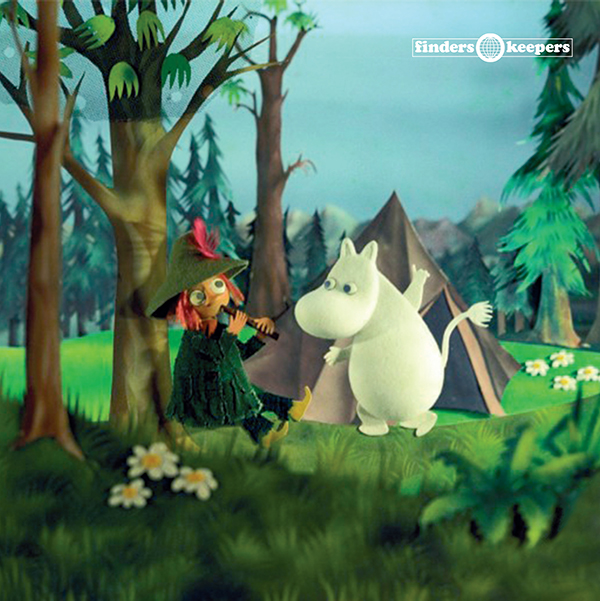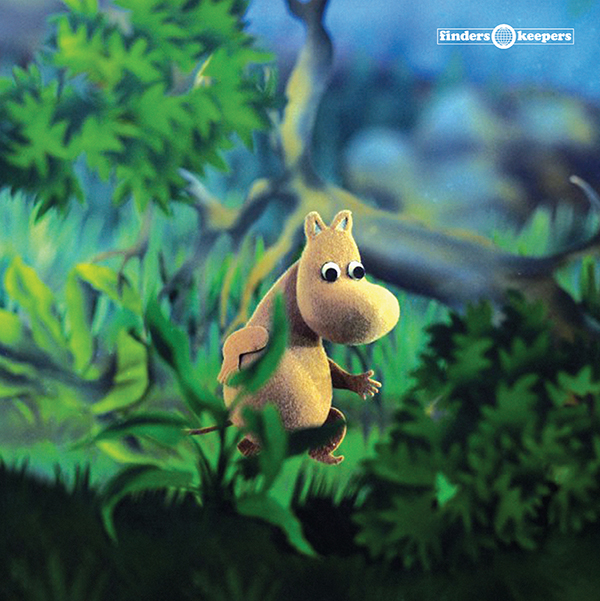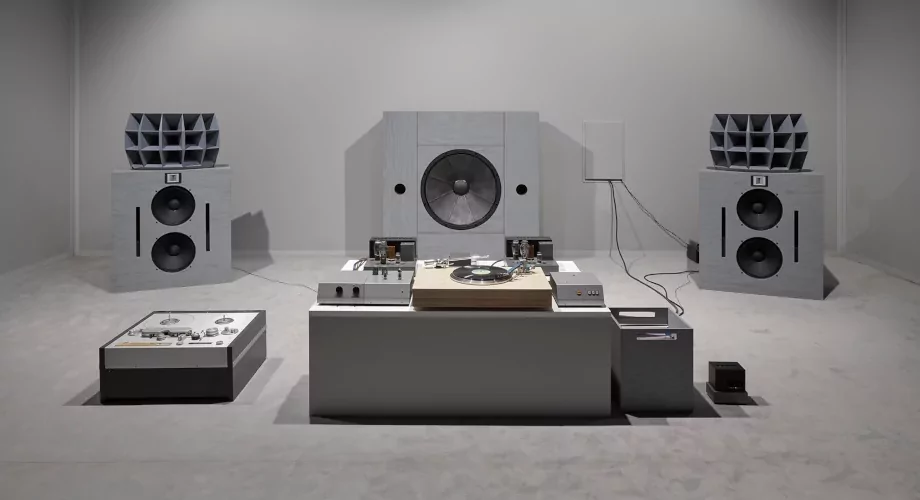Published on
February 3, 2017
Category
Features
Working from the wind-blustered city of Leeds in the early ’80s, Graeme Miller and Steve Shill composed the soundtrack for The Moomins. This is the story of how their music, created on an early-entry Korg and a homemade Wasp synth, became the obsession of nostalgia nuts and electro acoustic aficionados.
The Moomins occupies a particular kind of place in British popular culture. Part of a proud tradition in odd, eerie children’s TV, it’s attained a status beyond what you might expect. Best remembered by the generation who grew up watching it in the early-’80s, the show’s cuddly, curious namesakes have gradually accrued wider cultural traction. With Finders Keepers releasing the original soundtrack for the first time, it marks another step toward a growing, nationwide appreciation.
The show is based on the original books and comic strips of Finnish illustrator Tove Jansson, who first created the endearing, rounded Moomins figures in the ‘40s. Following the comics’ occasional appearances in UK newspapers, the show was broadcast on British TV screens between ‘83 and ‘85. Recently, the original books have been published in English for the first time, while the current exhibition at London’s Southbank Centre is another celebration of Jansson’s legacy.
Originally animated by Polish studio Film Polski for German and Austrian TV, it was not long after those original broadcasts that TV producer Anne Wood caught an intriguing glimpse of the hand-animated, soft felt figures. Seeing the simple, sometimes serious world of Moominvalley, she sought to adapt it for UK audiences. Since involved in the likes of Teletubbies and In The Night Garden, it was one of the earlier instances of Wood’s knack for creating alien, entrancing worlds for kids.
Ditching the music that accompanied the German and Austrian original, the new soundtrack was crucial to its otherworldly atmosphere. Recorded by Graeme Miller and Steve Shill, the one consistent thread is its strangeness: there’s thick, ominous atmospherics, bongo-tapping, dread-filled freakouts and folk ditties that sound as if they were recorded in space. It reflects a time when electronic music was in its formative stages; using an early-entry Korg and a Wasp synthesiser, they made naive, playful experiments with some of the first affordable synths in the UK.
They were co-founders of Impact Theatre, a Leeds-based theatre co-operative that had begun to garner attention for their use of soundtracks. Uncommon at the time, their productions would feature absorbing, end-to-end sound design. In the years since then, Shill has moved out to LA to direct big budget shows for American TV, like Dexter and The Sopranos. Miller, meanwhile, has carved out a career creating art and installations in London.
Speaking to Miller over Skype, he recounts some early memories from (what appears to be) a bright, spacious living room, dotted with some colourful light fixtures. Recalling those early theatre productions in Leeds, he describes the way their recordings would colour performances. “There’d be this continuous soup of atmosphere. A dark, brooding sort of atmosphere, out of which other bits of music would occasionally explode. People wouldn’t come and talk to us afterwards, because they could be a bit disturbing.”
Hearing about these shows, Wood contacted them with a view to working on the new programme she was developing. As Miller explains, they were given mostly free rein to intersperse it with the freaky noises, and odd combinations – colliding pan pipes and drones, or synths and ocarinas – that had become their calling card. “We’d had a couple conversations with Anne about the sorts of qualities that were in the books. They’re sort of sadder and weirder than a lot of children’s books: a mixture of things that are quite funny but also a bit melancholic. So I think we just tuned into that, had those one or two conversations and then just went for it.”
“We were the kind of composers where everything we turned our hands to didn’t turn out the way we intended,” Miller says. As he explains, their haphazard way of working produced weird results – but in a way that ended up being perfect for the strange atmospheres they sought to cultivate. Or as he puts it, “We were bad enough musicians for it to come out wonky, but sophisticated enough listeners to know that wonky was good.”
In keeping with the homespun, tactile simplicity of the show, it also tallied with one of their inspirations: the ’60s TV series The Adventures of Robinson Crusoe. First broadcast on French TV, the BBC adaptation was go-to viewing during the summer holidays when Miller and Shill were growing up. Like The Moomins, the British adaptation boasted a new soundtrack composed by Robert Mellin and P. Reverberi.
Describing what’s so enduring about its appeal, Miller explains, “It wasn’t to do with piling on loads and loads of strings. There were probably a dozen musicians in a room at the most. There could be a harpsichord and a voice, and it would create a haunting theme tune. It’s to do with a kind of golden age, and I think the composers of the Robinson Crusoe very much fit into that.”
When it came to recording a soundtrack themselves, their approach translated that simple methodology onto their own, particular surroundings. Rather than composing simple, impactful scores to be performed by a professional band, they did it themselves. With methods born of late-night, bedroom experiments taped to a housemate’s four-track tape recorder, they worked their way around instruments they weren’t sure how to use. And it was that DIY ethos which guided the way they made the soundtrack.
It was the kind of mentality then being embraced by a generation of artists in the northwesterly, wind-blustered city of Leeds. “It was a sort of dark, dirty England, in which if you wanted to be creative you didn’t really have much to lose,” Miller remembers. With the aftershocks of punk rippling out from London to the declining, northern industrial centres, their warehouses and cheap, terraced houses were populated by creatively-minded twenty-somethings. As he says, “There was a real spirit that other people were around there doing it. So lots of bands came out of Leeds, Sheffield and Manchester. It was the North, it was sort of dark and disaffected and the Yorkshire Ripper was on the prowl.”

Influenced by Brian Eno’s ambient opuses on the one hand, and Kraftwerk’s synth-powered pop creations on the other, their music shows touches of both. With electronic music still in the process of being defined, the music reflects that period of openness. Piecing together different, contrasting musical ideas, tracks shift between oddball synth-pop and slow-moving proto-techno. Often hinting at the later, divergent directions which pop and dance music would take, Miller says that this reflected the different kinds of music they were listening to at the time. “We were somewhere in the middle of it all. Kraftwerk had already happened, so that link to dance music was almost direct.”
Working on The Moomins, then, was a chance to take their all-enveloping approach to a new scale. Having worked to build absorbing atmospheres for hour-long theatre productions, it meant turning their attentions to whole series of five-minute episodes. “You’re sort of servicing an imaginary world,” he says. In particular, the theme tune was an important, musical calling card that still burned strong from his own memories of growing up. “That was kind of exciting, as theme tunes were things that I’d only experienced before, as the receiver. They’re such an indicator of this world come back,” he says. “It indicates that there’s a world you can dream in.”







